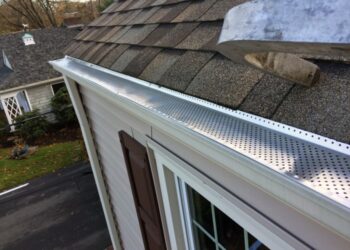Delving into the realm of siding and window replacement costs opens up a world of crucial factors and estimations that homeowners need to navigate. Get ready to uncover the key aspects that shape these costs and discover valuable insights to guide your decision-making process.
In the following paragraphs, we will break down the various factors affecting costs, explore estimation methods, delve into cost-saving strategies, and shed light on financing options for your siding and window replacement projects.
Factors Affecting Siding and Window Replacement Cost
When considering the cost of siding and window replacement, several key factors come into play that can significantly impact the overall expenses. Factors such as material quality, labor costs, and the scope of the project all play a crucial role in determining the final cost of the replacement.
Material Quality
The quality of the materials used for siding and window replacement can have a substantial impact on the total cost. Higher quality materials often come with a higher price tag but can offer better durability and longevity. For example, vinyl siding is more cost-effective upfront compared to wood or fiber cement, but may require more maintenance in the long run, potentially increasing overall costs.
Labor Expenses
Labor costs are another significant factor affecting the cost of siding and window replacement. Skilled labor is essential for proper installation, and experienced professionals may charge higher rates for their services. The complexity of the project, such as the size of the house and the condition of the existing siding or windows, can also influence labor expenses.
Project Scope
The scope of the project, including the size of the house, the number of windows and doors to be replaced, and any additional features or customization, can impact the overall cost of replacement. Larger projects with more intricate designs or special requirements may require more labor and materials, leading to higher expenses.
Energy-Efficient Windows
Opting for energy-efficient windows can also affect replacement costs. While energy-efficient windows may have a higher upfront cost, they can help reduce energy bills in the long term by improving insulation and reducing heat loss. Homeowners may be eligible for rebates or tax incentives for installing energy-efficient windows, which can offset some of the initial costs.
Cost Estimation Methods
When it comes to estimating siding and window replacement costs, there are several methods that contractors and homeowners use to determine the overall expenses. These methods play a crucial role in planning and budgeting for such home improvement projects.
Obtaining Multiple Quotes
One of the most important steps in estimating siding and window replacement costs is to obtain multiple quotes from different contractors. This allows homeowners to compare prices, services offered, and the quality of materials used. By getting multiple quotes, you can ensure that you are getting a fair and accurate cost projection for your project.
Influence of House Size, Design Complexity, and Location
The size of the house, the complexity of the design, and the geographical location can significantly impact the cost estimates for siding and window replacement. Larger houses will require more materials and labor, leading to higher costs. Similarly, complex designs or architectural features may require custom solutions, increasing the overall expenses.
Additionally, labor and material costs can vary depending on the location of the house, with urban areas typically having higher prices compared to rural areas.
Negotiating with Contractors
When it comes to getting the best pricing for siding and window replacement, it is essential to negotiate with contractors effectively. Homeowners can discuss potential discounts, ask for alternative materials that may be more cost-effective, or consider bundling multiple projects together for a better deal.
By being open to negotiation and willing to explore different options, homeowners can save money on their home improvement projects.
Cost-Saving Strategies

When it comes to siding and window replacement projects, there are several cost-saving strategies that homeowners can consider to manage expenses effectively. By exploring options like DIY installation, investing in high-quality materials, and prioritizing proper maintenance, individuals can potentially reduce overall costs and maximize long-term savings.
DIY Options vs Hiring Professionals
- DIY Installation: Taking on the installation of siding or windows yourself can significantly reduce labor costs. However, it is essential to have the necessary skills and tools to ensure the job is done correctly.
- Hiring Professionals: While hiring professionals may come with a higher upfront cost, it can ensure that the installation is done efficiently and correctly. This can prevent costly mistakes that may arise from DIY projects.
Investing in High-Quality Materials
- High-Quality Materials: Opting for high-quality siding and windows may have a higher initial cost but can lead to long-term savings. Durable materials are less likely to require frequent replacements or repairs, reducing overall expenses over time.
- Energy-Efficient Options: Choosing energy-efficient windows and siding can also result in savings on utility bills by improving insulation and reducing energy consumption.
Proper Maintenance for Cost Reduction
- Regular Inspections: Conducting regular inspections and maintenance can help identify issues early on, preventing them from escalating into costly repairs or replacements.
- Cleaning and Care: Simple tasks like cleaning windows and siding regularly can prolong their lifespan and maintain their appearance, reducing the need for premature replacements.
Financing Options for Siding and Window Replacement
When it comes to replacing siding and windows, financing options can play a crucial role in making the project more manageable for homeowners. Let’s explore the different ways you can finance your siding and window replacement to make an informed decision.
Loans
- Home Improvement Loans: Specifically designed for home improvement projects, these loans offer fixed interest rates and predictable monthly payments.
- Personal Loans: Unsecured loans that can be used for various purposes, including siding and window replacement. They typically have higher interest rates compared to home improvement loans.
Credit Cards
- Using credit cards for siding and window replacement can be convenient, but it’s important to consider the high-interest rates that come with credit card debt.
- Some credit cards offer promotional financing with 0% interest for a certain period, which can be beneficial if paid off before the promotional period ends.
Home Equity
- Home Equity Loans: Borrow against the equity in your home to finance siding and window replacement. These loans typically have lower interest rates but require your home as collateral.
- Home Equity Lines of Credit (HELOC): Similar to home equity loans, HELOCs allow you to borrow against your home’s equity, but you can draw funds as needed, making it a flexible financing option.
Government Incentives and Rebates
- Energy-Efficient Rebates: Some government programs offer rebates or incentives for upgrading to energy-efficient siding and windows, helping offset the replacement costs.
- Tax Credits: Look for federal or state tax credits for energy-efficient home improvements, which can provide financial relief when replacing siding and windows.
Budgeting and Planning
- Set a realistic budget for your siding and window replacement project by getting multiple quotes from contractors and suppliers.
- Consider the long-term savings from energy-efficient upgrades when planning your budget, as they can help recoup some of the initial costs over time.
Ultimate Conclusion
As we wrap up this discussion on siding and window replacement costs, we hope you’ve gained a deeper understanding of what influences these expenses and how to navigate them effectively. Armed with the right knowledge, you’re now better equipped to make informed decisions when it comes to enhancing your home’s exterior.
Key Questions Answered
What factors can impact the cost of siding and window replacement?
Factors like material quality, labor expenses, and project scope can significantly influence the overall costs.
How can energy-efficient windows affect replacement costs?
Energy-efficient windows may have a higher upfront cost but can lead to long-term savings on energy bills.
Why is it important to obtain multiple quotes for cost estimation?
Getting multiple quotes ensures you have a better understanding of the average cost and can help you negotiate for a better deal.
Are there any DIY options for siding and window replacement projects?
DIY options can save money but may not always guarantee the same quality as professional installation.
What financing options are available for homeowners looking to replace siding and windows?
Homeowners can explore financing through loans, credit cards, or home equity, and may also benefit from government incentives or rebates.







